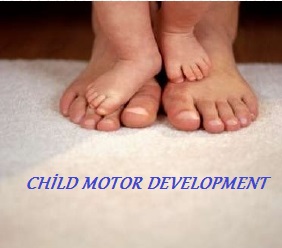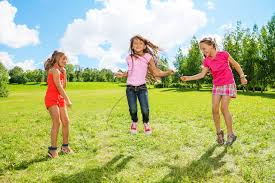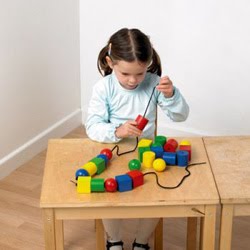
What is the Child Motor Development?
Motor development can be understood as the way children learn to use their bodies and their ability to do the tasks they want to do. Children use their muscles to do small, precise tasks, such as cutting, which is a fine motor skill.Muscles are also used for larger tasks such as running, which is considered a gross motor task.
Developing gross motor skills and fine motor skills gives your child the building blocks he needs to skip, play or dance.

Gross Motor Skills
Gross motor skills are the skills your child needs to move her body and do activities that use her arms and legs. Children develop their large motor muscles before their smaller muscles; therefore, crawling, walking, running or wiggling will progress before skills such as cutting or weaving. Simply doing activities that use your child’s large muscles will help further the development of them.

Fine Motor Skills
Fine motor skills refer to the child’s abilities to use his hands and feet and his coordination with his fingers and toes. Grasping, using, scissors, opening or clossing hands, clapping, throwing, catching, folding or unfolding are all examples of activities that use the small motor skills. Fine motor skills develop well after the larger motor skills and giving your child tasks that require skills more advanced than his developmental range can load frucration.
Small Muscle Control
Small muscle control is important because there are many everyday tasks thatrequire dexerity. Writing, cutting and tying shoe laces are just a few of the activities that require small muscle control. Without small muscle control modern living would be difficult.
How is Small Muscle Control Developed?
Small muscle control can be developed by practice. For example, the more a child writes his or her name the more confidents he will become in forming the letters and writing legible. In the same vein, the more a child ties his or her shoe laces the more skilled he will become at making loops and knots. The same goes for any activity that requires small muscle control-the more the activity is practiced, the greater small muscle control will be.
Fine Motor Play
Children use a wide variety of objects to develop small muscles used for fine motor activities. Building block sets such as Lego and Duple build fine motor skills as children put them together and pull them apart. Provide old newspapers and magazines and let children practice tearing off strips of paper and wadding them into balls. Sand, rice and water tables offer an endless number of play activities for toddlers. A pail and shovel with a pile of sand turn children into architects and designers; if you add some small cars, they become race car drivers. A rice table provides an interesting play surface and a good place to hide and find small objects. A water table can be a swimming pooln for vinly or plastic dolls or a lake to float boats on. Provide plastic aprons to cover the toddlers clothing when they play at the water table. Keep sand and water tables on opposite sides of the classroom or open only one at a time to avoid having mud tables.
How is Large Muscle Control Developed?
Activities to help children develop gross motor skills are those that improve coordination in the large muscles and that help children with control and coordination of their bodies. These skills include head control, rolling and walking in very young children and skills such as running, jumping and hopping in older children. There are many different kinds of activities that can help children develop gross motor skills.The appropriate depend upon the child’s age.
For example:
Jump ropes can be incorporated into activities to develop gross motor skills with different activities depending upon the child’s age level. Preschool teachers often gather toddlers into a group or circle for fun activities that develop gross motor skills. Games of Simon Says, Fallow the Leader, Duck, Duck, Goose, London Bridges and Head and Shoulders, Knees with children today. You can encourage children to engage in motor play activities by setting up play areas such as a block area where toddlers can build towers, walk under them, knock them down and step over them. Lay a sheet on it. Provide soft-textured balls, such as inflatable beach balls, koosh balls and stress balls for indoor use. Hang a it and leave one down so children can throw and kick it. Play a game of hot potato with a ball, tossing it from one person on the next. Children also love to dance, so provide music to help them get their groove on. Freestyle dance works, or you can teach toddlers the bunny hop,chicken dance and the hokey pokey.
Developmental Milestones
Children who are one year of age should be able to grasp food, reach for objects, stand by themselves, crawl and pull themselves up on their own. Over the next six months , she should develop the ability to grasp a pencil, pound objects together, walk alone , walk backwards, throw and kick a ball. By 2 years, your child should be able to use a spoon to feed herself, draw lines, run, kick, jump and use a slide. Before the 3 year mark, your child should be able to assist in small household activities, run well and walk up stairs. Between 5 and 7 years, your child will be able to do beading projects use a toothbrush, change their own clothes, ride a bicycle and carry out household chores.
Encouraging Motor Development
During the first year of life, make sure your child’s blankets are loose enough that he can use his arms and legs to develop his muscles. Also, encourage him to try activities that are just beyond his abilities, though not far enough advanced that it frustrates him and gives him a sense of failure. Push him to crawl and as he gets older, to stand,jump,walk,climb,play in sand or balance.